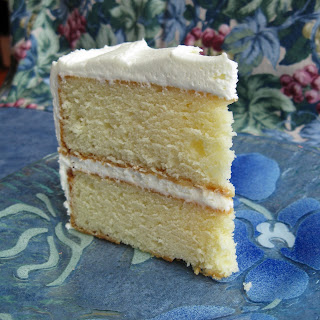I found this recipe in a catalog from Penzey's Spices. This recipe makes 12-15 soft pretzels, depending on how large you want them. They are best eaten the same day they are made.
Dough:
3 cups All-purpose Flour (plus another 1/2 - 1 cup for kneading in)
1 1/2 teaspoons INSTANT yeast *see note on yeast below
1/4 Brown Sugar
1 1/4 cups warm water (not HOT)
4 Cups water
4 Tablespoons Baking Soda
Kosher Flake Salt for sprinkling on top
Other seasoning ideas: Parmesan Cheese, Italian Seasoning blend
Put the flour in a bowl with the yeast and sugar. Stir together until well-mixed. Add the water in and mix with a wooden spoon. Turn the mixture out onto a well-floured board and knead in the extra flour until the mixture feels smooth and not tacky to the touch (a nice elastic dough will take 7-10 minutes of kneading). Place the doughball in a greased bowl and cover loosely with plastic wrap or a clean kitchen towel. Place it in a warm area of the kitchen and let it sit for 30-40 minutes. It doesn't have to double in size, but it will be much bigger than it was.
Preheat oven to 500 degrees. Line two baking sheets with parchment paper.
Pour the 4 Cups of water into a large pot and bring to a boil. While you are waiting for the oven and the water, divide the dough into 12-15 pieces, depending on how big you want your pretzels (I cut the dough in half with a knife, then half again, etc. until I have 12 pieces). Roll each piece of dough into a long snake-like shape, then twist it into a pretzel shape (this gets easier with practice). Let your kids make funny shapes if you want. Make sure to push the ends of the pretzel into the main part, giving them a firm poke with your fingertip so they stay intact when you boil them. This will create a divet, but that will mostly go away during cooking.
When the water has boiled, add the 4 Tablespoons of baking soda to the water (kids like to watch this because it foams up like a volcano). Give it a minute to dissolve, then dunk the pretzels in one at a time. Let them sit in the water for about ten seconds, turning them once to get the other side. Then gently lift them out of the water with a slotted spoon and place on a drying rack. DO NOT BLOT the top of the pretzel - leave it damp so the salt adheres. Repeat this step until all of the pretzels have had a short dip in the boiling water. I like to sprinkle the salt on each batch right after they've come out of the water.
Place the pretzels on a cookie sheet lined with parchment. Bake at 500 degrees for 6-8 minutes. They should be medium to dark golden brown and a little firm to the touch. If in doubt, take a spatula and peek at the bottoms to make sure the bottoms are golden brown as well. You can give them an extra minute or two if needed, but watch them carefully at this point - at 500 degrees, they can burn quickly!
These are best served while still warm from the oven. You can make them a couple of hours ahead and re-warm them in a low oven (200 degrees), but they are best eaten the same day.
* Note about yeast: I like using INSTANT yeast because you mix it directly into the flour, skipping the step of dissolving the yeast in water first. Instant yeast is also more powerful, so you use less and it tends to work more quickly. However, you can use active dry yeast if that is what is available to you - Use one packet (which equals 2 1/4 teaspoons) and be sure to dissolve it into the warm water for a few minutes before mixing the yeast/water mixture into the flour. Proceed with the rest of the recipe as above.


.JPG)












.JPG)





.JPG)


.JPG)






.JPG)


.JPG)

